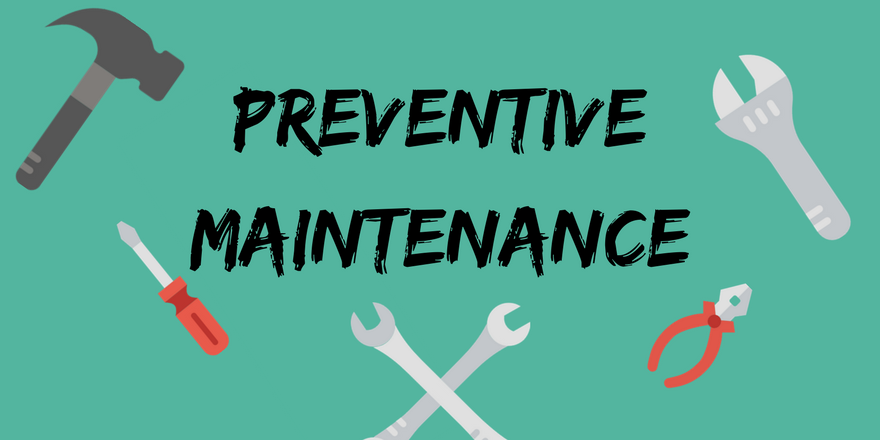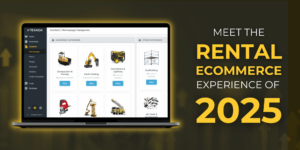In asset management, it’s essential to recognize equipment preventative maintenance not as a mere line-item expense but as a strategic investment that yields dividends over time. By fully grasping this concept, organizations can shift their perspective and see maintenance as critical to operational success. Preventative maintenance is the cornerstone for sustaining performance and reliability, effectively allowing businesses to avert unexpected equipment failure. Implementing a robust maintenance schedule is not just about preserving machinery; it’s about ensuring the seamless continuity of your operations and protecting your bottom line. Let us delve into how preventative maintenance can transform mere cost into opportunity, fostering an environment where dependability is the norm and unplanned downtime becomes a rarity.
Four Ways Preventative Maintenance Will Grow Your Bottom Line
You will have to spend money on equipment maintenance, but choosing to spend (or not spend!) that money could impact your income. When it comes to equipment servicing, you will be maintaining your equipment sooner or later.
Preventive maintenance is the act of performing maintenance on equipment to keep your fleet running at its best year-round. The key to preventive maintenance is routine inspection, detection, and correction of equipment failures before they occur or develop into larger defects.
Cost Savings
You may not like the sound of being asked to spend money before you have to, especially if you think of it as doing scheduled repairs on equipment that isn’t even broken. Well, the truth is that if it ain’t broke, it doesn’t mean you can’t fix it.
We are, of course, working under the assumption that you will be running your business for more than a couple of years and are concerned about the long-term health of your business. So, if you want to save money in the long run, understand that preventive maintenance;
- Extends an asset’s life expectancy, meaning they get more out of their original investment.
- It increases the efficiency of equipment, saving money on energy consumption.
- Decreases downtime, increasing utilization of assets.
- Maintains a better resale value on your equipment.
Improved Safety
When equipment isn’t well maintained, it becomes a dangerous variable on each job site it enters. Preventive maintenance allows you to deploy your fleet with confidence that the machines are in optimal working condition. Reducing the overall risk of equipment-related accidents and injuries.
Also, some insurance providers will require you to provide maintenance records of your equipment and offer discounts to operators who take care of their equipment.
Enhanced Reputation
Rental shops enjoy plastering their equipment with customer stickers, letting the world know whose equipment is being used on that site. It can be great when everything is running smoothly, but having an entire job site looking at a broken-down piece of equipment quickly sends the wrong message.
An investment in the reliability of a company’s equipment is also an investment in the reputation of their business. You have customers, and they care about what those customers think of you. With preventive maintenance, you can boost your reputation as a reliable company because your equipment will always be ready to perform, decreasing the risk of your customers having to delay jobs due to equipment failure.
Offer Routine Maintenance Contracts for Recurring Service Revenue
If you sell equipment or work with companies that own their equipment, preventive maintenance can be a new revenue stream for your business. Adding additional assets to the schedule is easy once you have a system to track preventive maintenance.
By offering routine maintenance contracts to customers, you can leverage preventive maintenance to become a recurring source of service revenue. It also allows you to be paid to visit your customers regularly, which helps build your working relationship and can lead to more future sales, rentals, and service contracts.
For example, while on-site performing an oil change, your tech may discover another part of the machine that is wearing out. Suggesting they monitor this or replace it now can be the difference between scheduled and emergency downtime for their fleet.
Pro Tip: Regularly scheduled preventative maintenance saves costs in the long run and enhances equipment reliability, safety, and reputation. Consider offering routine maintenance contracts to clients to create a recurring revenue stream while ensuring their equipment remains in optimal condition.
How to Develop an Effective Preventative Maintenance Schedule?
Maintaining your equipment in peak condition minimizes downtime and maximizes productivity. Developing an effective preventative maintenance schedule is an integral part of equipment management. Here’s how to establish a maintenance routine that keeps your fleet running smoothly.
Assessing Equipment Needs and Usage Patterns
Start by evaluating the specific requirements of each piece of equipment. Consider factors such as operational hours, environmental conditions, and manufacturer’s guidelines. This assessment will help determine the frequency and type of maintenance tasks required for each machine.
Factors Influencing the Frequency of Scheduled Maintenance
- Equipment age and condition.
- Level and intensity of use.
- Operating environment (e.g., dusty, wet, or corrosive settings).
- Historical performance data and past failures.
Deep-Dive into Preventative Maintenance Checks
Ensuring equipment longevity and reliability necessitates a comprehensive understanding of preventative maintenance checks. Regular examinations of key components are crucial to proactively identifying potential issues before they escalate into costly breakdowns.
Key Components to Inspect Regularly
- Engine: Check for leaks, measure oil levels, and inspect the air filter and cooling system.
- Hydraulic systems: Look for leaks and test pressures, and evaluate hoses and fittings.
- Electrical systems: Test the batteries, inspect wiring, and ensure all controls function properly.
- Undercarriage: Check for wear, ensure proper tension, and inspect rollers and tracks.
- Attachments: Examine for damage or wear and verify that connections are secure.
Creating a Checklist Tailored to Different Equipment Types
Different machines require unique maintenance checklists reflecting their specifications and operational demands. To structure a robust preventative maintenance program:
- Determine the manufacturer’s recommended service intervals and critical checkpoints for each equipment type.
- Assess the operational conditions and environment in which the equipment is used to identify additional areas of concern.
- Involve operators and maintenance personnel to gather insights on common issues or early signs of wear.
- Consolidate this information into a comprehensive checklist that covers daily, weekly, monthly, and annual maintenance tasks.
Adopting a detailed and equipment-specific checklist will ensure that all vital components receive appropriate attention, reducing the risk of unforeseen failures and maximizing equipment uptime.
Extending Equipment Lifespan with Maintenance
Maintenance is not just about fixing what’s broken; it’s about preventing breakdowns before they occur. Regular and systematic maintenance is crucial in extending the life of your equipment. This proactive approach ensures that your assets continue to operate efficiently and can lead to significant cost savings over time.
The Direct Correlation Between Regular Upkeep and Equipment Reliability
There is a well-established link between consistent preventative maintenance and equipment dependability. Regular maintenance routines help identify and address minor issues before they escalate into major problems, reducing the likelihood of unexpected downtimes and prolonging the operational life of the machinery.
Data-Driven Insights into Maintenance’s Impact on The Asset Lifecycle
Recent studies provide concrete, data-driven insights into maintenance’s positive effect on equipment. Well-maintained machines showcase a longer lifespan than those with erratic or neglected maintenance schedules. Tracking performance data over time can clearly illustrate how regular upkeep contributes to an overall increase in the return on investment for each piece of equipment.
- Preventative maintenance helps avoid significant degradation that can lead to premature equipment failure.
- Maintained equipment is more efficient, often consuming less fuel and requiring fewer repairs.
- Equipment with a complete and documented maintenance history retains a higher resale value, offering an additional financial advantage.
By integrating strategic preventative maintenance practices, businesses can ensure that their equipment runs smoothly and remains a valuable asset for longer.
Pro Tip: Implement data-driven preventative maintenance to maximize equipment lifespan, reliability, and efficiency. A documented maintenance history can also increase equipment resale value.
Empowering Your Team with Preventative Maintenance Training
Preventative maintenance is not just about scheduling checks and replacing parts; it’s also about having a skilled team capable of identifying issues, implementing the right maintenance procedures, and ensuring everything is up to industry standards. Providing comprehensive training for your team is crucial in equipping them to handle complex equipment preventative maintenance tasks effectively.
Importance of Skilled Staff to Perform Maintenance Procedures
Ensuring that each team member knows your equipment’s unique requirements can improve reliability, lower costs, and enhance safety. Skilled staff are the backbone of any successful preventative maintenance program, as they carry out the critical tasks that keep operations running smoothly. Investing in their development means investing in the longevity and efficiency of your equipment.
Best Practices for In-House Training Programs
- Assessment: Identify the current skills of your personnel and determine the training needed to fill any gaps.
- Customization: Tailoring your training programs to address the specific types of equipment used and the unique maintenance challenges they present.
- Engagement: Use interactive methods and hands-on practice to ensure your team applies the lessons learned.
- Continuous Improvement: Updating training materials regularly to incorporate new technologies, techniques, and industry standards.
Focusing on these areas can help you build an in-house training program to keep your team at the forefront of preventative maintenance knowledge and foster a culture of continuous improvement and excellence.
Streamline Your Preventative Maintenance with Top-Tier Software Solutions
In the digital transformation era, maintenance management software has emerged as a pivotal tool for enhancing the efficiency and accuracy of preventative maintenance programs. By digitizing routine processes, these robust solutions empower businesses to transition from conventional, paper-based workflows to a sleek, centralized digital platform.
How Does Technology Aid in Tracking and Scheduling Maintenance Tasks?
With the advent of cutting-edge maintenance management software, companies can now effortlessly monitor the health of their equipment and schedule necessary maintenance tasks with unparalleled precision. This seismic shift in operational capability minimizes the risk of unpredictable breakdowns and streamlines resource allocation, optimizing overall productivity. Moreover, the software’s user-friendly dashboard provides a comprehensive overview of upcoming and completed tasks, spurring proactive maintenance decision-making.
- Automated Scheduling: By automating the scheduling process, maintenance management software ensures that routine checks are never overlooked, helping to maintain equipment in prime condition.
- Real-time Monitoring: Gain instant insights into the operational status of your equipment fleet, facilitating immediate action when necessary to avert potential malfunctions.
- Historical Data Analysis: Access to historical maintenance records within the software allows for informed assessments, paving the way for improved strategies and practices in equipment upkeep.
- Cost-Tracking: Keep a meticulous record of maintenance-related expenses, which assists in fine-tuning your budget and uncovering potential cost-saving opportunities.
In summary, embracing maintenance management tools simplifies the tracking and scheduling of preventative maintenance tasks, providing the foundation for a resilient and high-performing maintenance strategy. Businesses poised at the forefront of technology adoption are set to redefine the standards of operational excellence and equipment reliability.
Pro Tip: Leverage top-tier maintenance management software to automate scheduling, monitor equipment in real-time, analyze historical data, and track maintenance costs. This technology streamlines preventative maintenance tasks, optimizes resource allocation, and enhances operational efficiency.
Recognizing Early Signs of Wear and Tear
Equipment preventative maintenance is crucial for ensuring the longevity and reliability of your machinery. A key aspect of this process involves early detection of wear and tear, which can prevent costly breakdowns and unscheduled downtime. This section discusses identifying the common indications of potential problems and the techniques for intervening before these issues escalate.
Identifying Common Indications of Potential Problems
Being vigilant about the condition of your equipment is the first step in preventative maintenance. Regular machinery inspection is needed to identify any signs of wear and tear. Look for visual cues such as abnormal wear patterns, cracks, corrosion, leaks, or abnormal noises and vibrations during operation. Consider critical components such as gears, bearings, hydraulic systems, and seals. These parts are often the first to show signs of distress and can offer early warnings if inspected consistently.
Techniques to Intervene Before Issues Lead to Downtime
- Regular Cleaning: Dirt and debris can cause significant damage over time. Maintaining a regular cleaning schedule for all equipment can prevent buildup that leads to excessive wear.
- Lubrication: Adequate lubrication reduces friction and wear. Ensure that lubrication schedules are followed strictly and that the correct type of lubricant is used for each component.
- Tightening Loose Components: During regular checks, tighten bolts or fittings that may have become loose due to vibration or regular use.
- Timely Replacement of Parts: Do not wait for a failure to occur. Replace parts that display significant wear or are nearing the end of their service life per the manufacturer’s recommendations.
- Record Keeping: Maintain detailed records of inspections, maintenance activities, and part replacements to track the wear history and predict future maintenance needs.
By recognizing early signs of wear and tear and promptly addressing them, you can ensure that your equipment remains in top condition, thus preserving its value and functionality for years.
Customized Maintenance Tactics
Equipment preventative maintenance is not a one-size-fits-all solution. Different types of equipment have varying maintenance needs, and these requirements can significantly alter based on the specific application and environment in which the equipment operates. It’s essential to develop and implement maintenance tactics tailored to the nuances of each piece of machinery within your fleet.
Diverse Approaches Based on Equipment Type and Usage
Different machinery requires unique maintenance regimes. For instance, heavy-duty construction equipment that endures strenuous tasks will need more frequent and robust maintenance checks than lighter equipment used less intensively. Recognizing these distinctions is crucial in assigning the correct level of care and inspection that each type of equipment demands.
Personalizing Plans to Meet Operational Needs
Understanding the operational intricacies of your business allows for a more effective preventative maintenance strategy. Each piece of equipment has its role, and the impact of downtime can vary. Personalizing your maintenance plan means considering these aspects to prioritize and allocate resources efficiently:
- Assessing the criticality of each machine to your operation.
- Adjusting maintenance intervals based on usage instead of standard time frames.
- Using operational data and history to forecast maintenance needs.
- Allocating skilled staff to complex maintenance tasks.
- Ensuring maintenance tasks are compatible with operational schedules.
By incorporating these customized maintenance tactics, your equipment maintenance program will preserve the condition of your assets and align perfectly with your operational workflow, maximizing productivity and minimizing avoidable downtime.
Pro Tip: Customize maintenance tactics for each piece of equipment based on type, usage, and environment. Consider criticality, usage patterns, and historical data to optimize resource allocation and minimize downtime.
Securing a Sustainable Future with Preventative Maintenance
In summarizing our comprehensive journey through the world of Preventive Maintenance, it’s clear that the systematic implementation of regular maintenance checks and balances is indispensable in enhancing construction equipment’s reliability, longevity, and performance.
Advantages of Systematic Preventive Maintenance
Adopting a rigorous preventive maintenance protocol has many advantages. It contributes to significant cost savings by averting untimely breakdowns and costly repairs and ensuring that equipment operates optimally efficiently, maintains its value over time, and adheres to strict safety and compliance standards.
Cultivating a Maintenance-Minded Work Culture
Instilling a maintenance culture within any organization is not just about scheduled checks and mechanical tune-ups; it’s about cultivating a mindset among staff and management that prioritizes the care and maintenance of valuable equipment. By embedding this ethos throughout the company, you create an environment where the value of maintenance is recognized and proactively embraced.
Key Takeaways
- Preventative maintenance extends equipment life, enhances efficiency, and reduces downtime, leading to significant long-term cost savings.
- Regular maintenance ensures equipment safety, reducing the risk of accidents and boosting your company’s reputation for reliability.
- Tailoring maintenance schedules based on equipment type, usage, and operational needs optimizes productivity and minimizes avoidable downtime.
- Investing in staff training and leveraging maintenance management software enhances maintenance efficiency, ensuring a proactive approach to equipment upkeep.
Take Action Now to Prevent Issues Later
As we conclude, we encourage you to reassess your approach, upgrade your maintenance routines, and don’t hesitate to leverage modern aids such as maintenance software, training programs, and predictive maintenance technologies.
Remember, preventive maintenance isn’t just a task—it’s an investment in your company’s future. Act now to ensure your equipment and business will operate smoothly for years.



 December 13, 2024
December 13, 2024 3 minutes read
3 minutes read
